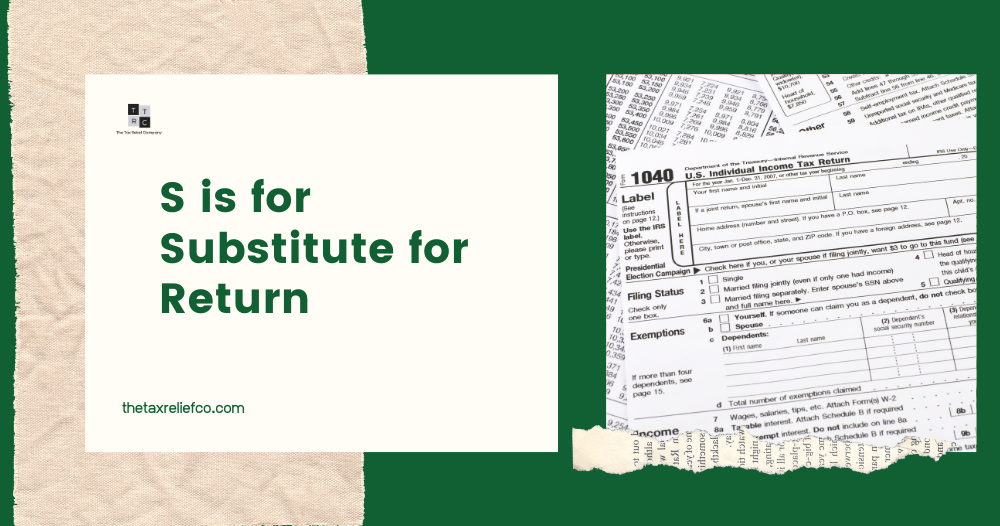S is for Substitute For Return
The IRS can file a substitute for return on your behalf.
It’s been a few years since you filed a tax return.
There could be any number of reasons for being delinquent in your annual tax filings. For example, perhaps you don’t believe in filing tax returns. Or you haven’t filed in many years and are fearful of the ramifications after you begin filing. Still, maybe you simply didn’t want to. Nevertheless, there are ramifications for not filing. One is called a substitute for return (SFR).
An SFR is a tax return that the Internal Revenue Service will prepare on your behalf. The tax return that the IRS will prepare on your behalf generally comes about two years after the original tax return would have been due and is usually prepared in an automated method.
The IRS prepares the return based on the information from your employers, banks, and other payers. However, the SFR return doesn’t give you credit for deductions and exemptions you may be entitled to receive. Additionally, they prepare the return as married filing separately even if your last filed return has you recorded as married, even if you are now single.
The SFR Process
When the IRS begins the substitute return process, they’ll send a letter informing you they have not received a return for a specified number of years. The letter includes the tax liability and any penalties plus interest.
This letter also notifies you that you have 30 days to submit a completed 1040, a signed Consent to Assessment and Collection form, or a return letter explaining why you’re not required to file or any other special circumstances you feel the IRS needs to consider.
If you don’t respond within 30 days, the IRS must send a statutory notice of deficiency (SNOD), also known as a 90-day letter or the CP321N. This letter gives you 90 days before they begin levying and garnishing your wages.
How does the IRS get the information to prepare your substitute returns? The Substitute for Return (SFR) program gathers information from W-2s and 1099s and third-party sources and then creates the return based on that information.
Once the IRS computer has filed a substitute return, the IRS will inform you by mail and ask for your consent to the proposed return.
What to do when the IRS has filed an SFR
Fortunately, even after the IRS has begun the process, you can dispute the amount through the audit reconsideration process. This involves filing the original delinquent return that generated the SFR procedure. If your attempt to contest doesn’t succeed, you’ll need to pay the amount due and file a claim for a refund. If the IRS denies your claim, you can still file an appeal.
Other viable options include filing an Offer in Compromise to reduce or eliminate your tax liability.
The Tax Relief Company can help file your back returns and navigate the SFR process.
Jeffrey Schneider, EA, CTRS, ACT-E, has over 40 years of experience assisting taxpayers that find themselves with tax complications. If you owe more than 10K, contact us today to set up a free strategy session, during which we can assess your tax situation and determine how we can help you eliminate your tax nightmare.
Contact us today by calling 877-355-8010 or book an appointment online.



